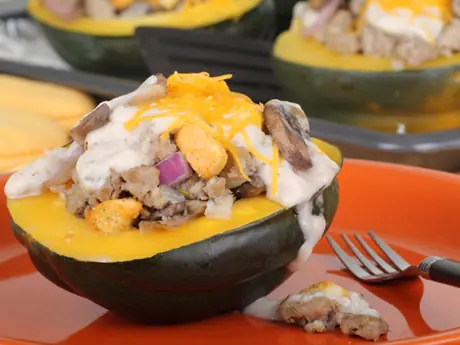"We found that students skipped meals fairly frequently, which could account for some of the lack of fruits and veggies," said Brad Cardinal, a professor of exercise and sport science at Oregon State University and one of the study's authors. "Still, even accounting for fewer meals consumed, the students were on average not always eating even one serving of fruits or vegetables per day, far below the USDA guidelines."
Unless the student is from an ethnic community that prefers specialty foods found on campus, there is the tendency to avoid vegetables. Cardinal, who is an expert in the psychological and social aspects of health and exercise said, according to a news release, that the larger take-away message is that proper eating and nutrition is not integrated enough into our society. He said the surveyed students came from OSU, where healthy options are available in dining halls.
"We are not teaching youth how to be self-sustaining," Cardinal said. "Home economics and nutrition classes have all but disappeared from our schools in the K-12 system. There is a fundamental lack of understanding on how to eat well in a very broad sense."
Cardinal said that studies show that when people prepare food at home they tend to eat better and consume fewer calories. He said their survey showed that students ate out a lot and consumed at least one fast food meal per week.
"We have a cooking camp for (elementary school) kids here at OSU that teaches kids how to shop for their food, prepare it, and then clean up after themselves," he said. "These are essential skills every child should know, and it will stay with them long after they leave school."
Cardinal pointed to recent concerning trends, such as in Texas where health education is no longer required by the state. In addition, many school districts, including ones in Oregon, have cut home economics and nutrition classes due to budget constraints.
"Health is an area being neglected, yet all the available research show that healthy habits and healthy kids can lead to better academic success," Cardinal said. "We are doing a disservice to our kids by not teaching them these essential life skills."
How to Encourage Students to Eat Vegetables and Fruit
Back in Sacramento, students at California State University eat at several food markets and restaurants on campus. But they don't get many vegetables unless they order some of the Asian foods, which are loaded with salt and sometimes have more white rice on the plate than vegetables.
You're not going to easily find brown rice or black rice served at CSUS dining places. What you will find are a lot of pizza, crepes, sandwiches, burgers, hot dogs, fries, fats, and starchy fillers. There is an Indian foods eatery on CSUS campus where you can get an excellent chicken tikka masala, but it's served with white rice.
So how do you get college students to eat their vegetables? The answer is: Disguise the vegetables by liquefying them and including them in smoothies or sauces mixed in with other foods or served as a type of gravy. You hide the vegetables in emulsified fruit smoothies, sauces, and casseroles.
Hiding vegetables in children's foods is effective, and kids of all ages from preschool to graduate school will eat food that tastes familiar. Preschoolers in a Pennsylvania State University study ate twice as many vegetables and 11% fewer calories just by eating their favorite foods - creatively enhanced with pureed fruits and veggies, that is.
What do you hide vegetables in? Try making banana or zucchini bread. If you're serving pasta, mix the pasta with chunks of chicken in a casserole and add pureed produce such as the cruciferious vegetables (cauliflower, broccoli) or tomatoes, squash, and zucchini. You can even add eggplant to a casserole, and the bright colors of squash are appealing to young children and teenagers.
So how do you hide vegetables in other foods? Just puree or emulsify the vegetables in a broth using your blender. Then add them to the foods. You can make date-nut bread and instead of liquid from water, add pureed or emulsified vegetables. Mix tomatoes and yellow or green squash to make bright colors in pasta. Check out this study on how to sneak vegetables into other foods so college kids will eat their vegetables.
 Eat right and perform better. Find a nutrition plan for you.
Eat right and perform better. Find a nutrition plan for you.
Sacramento Nutrition Examiner Anne Hart is a professional journalist and novelist with a specialty in nutrition, health, behavior and science.
- 2
- of
- 2









Discuss This Article